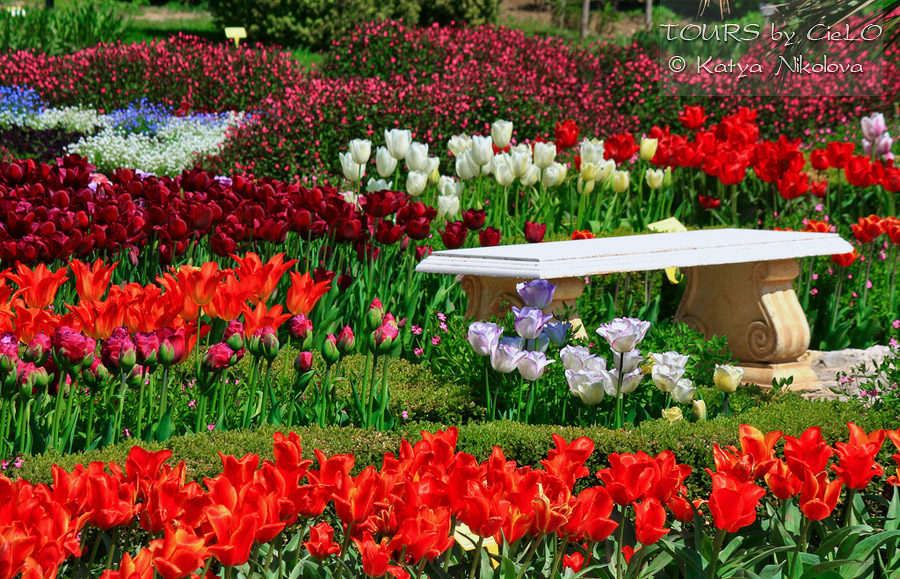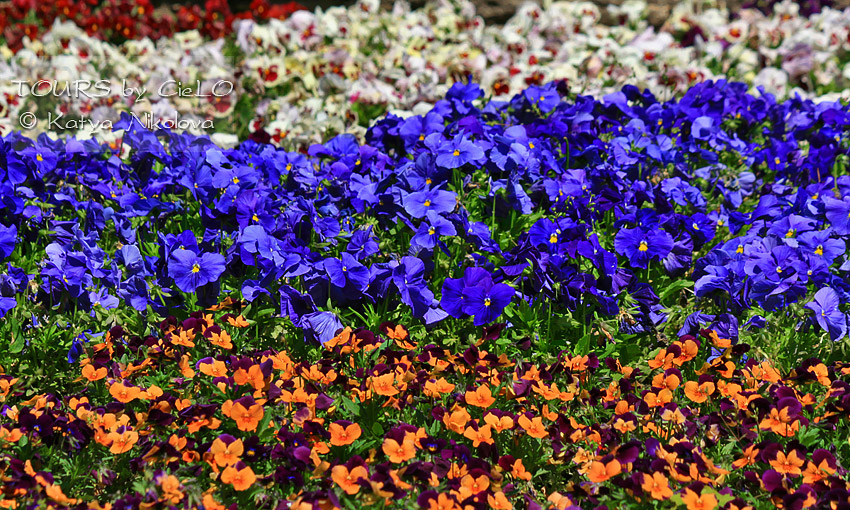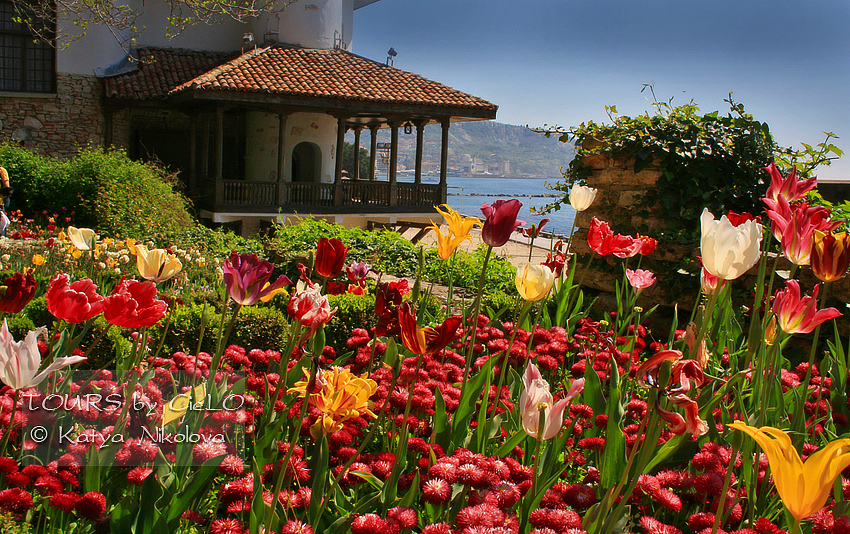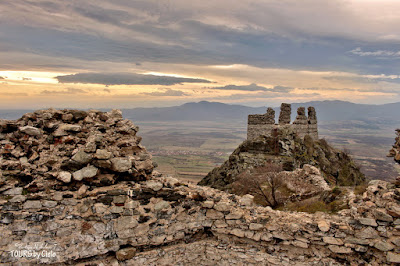A tulip – what do we know about this wonderful flower creature?
Its existence is mentioned in the old Persian literature in the 9-th century. It appeared on our continent (Europe) hardly in the 16-th century,
transferred from Mala Asia.
The Bulgarian name ‘lale’ comes from Turkish and Persian, and the latin
‘tulipa’ – from the Turkish word ‘tyurban’.
The biggest natural location and variety are in the Pamir Mountains, The
Hindu Kush and The Tian Shan Mountain. A few thousand sorts of tulips have been
gained for over 400 years.
Many of us associate tulips with Netherlands as the flower is a symbol of
this country, and it is the biggest producer of tulips.
It is considered that the beautiful flower appeared in Netherlands due to Ogier Ghislain de Busbecq, (1522-1592), a Flemish nobleman who lived
in Istanbul from 1556 to 1562 as the Austrian emperor Ferdinand’s ambassador in
the court of Suleiman II The Magnificent. His passion for herbs and plants made
him send tulip bulbs from the Ottoman Empire to his friend Charles de l'Écluse in 1554. Charles de l'Écluse managed to grow and naturalise the plants in the
Lowlands.
The tulip popularity spread and it was grown more seriously in the united
provinces (nowadays Netherlands) in about 1593. Its history is stunning but I
can’t help mentioning at least one curious fact such as ‘the pearl of spring’
attracted great interest in Netherlands that turned into a mania (tulipomaniа, tulpomanie, tulpenwoede, tulpengekte and bollengekte) that reached its
peak in the spring of 1637. Then single tulip bulbs were sold at a price 10
times higher than a qualified master craftsman’s annual income......
So today we can observe patterns, different leaf shapes and a variety of
colours.
According to Kazakh’s
epos happiness is hidden in the tulip bud. No one could open the beautiful
corolla for a long time. A little child saw it once. The child ran to the
meadow joyfully and touched the flower with the tender small hands. The bud
opened and great human happiness flew on earth.
There is a
superstition in Uzbekistan that the sky blue tulip which grows and blossoms in
the mountains brings luck
Since last year I have been thinking of
visiting the Botanical Garden in Balchik in spring. In the beginning of April I started checking when the right
moment for achieving the goal would come. And ‘voilà’, after short hesitations
at the end of the month we went together to the flowers paradise.
The weather was extremely pleasant for a walk.
We were some of the first visitors, not to say the first ones, a condition
that was enough to ‘enjoy’ the smorgasbord, undisturbed. The various sorts and
colours, ordered in groups and flower beds cast a spell on us. What variety,
what palette?!
After a long, long, long rotation around every sort as it is seen in the
quantity of photos we went to the other parts of the garden.
A little farther some merry pansies in many colours met us in the ‘Divine Garden’.
It was the fascicular daisies (Bellis) turn.
Flowers and blossomed trees fragrance was floating everywhere.
Spring was at its best.
I had visited the place before but that time I was dazed.
We couldn’t possibly miss the rest of the complex. And the history of the
site was good. We went to the Palace area. The Palace complex and its garden
(the botanical one) were created by the Romanian queen Marie of Edinburgh (Maria
Alexandrina Victoria de Edinburg (1875 – 1938) who was an heir of two big
aristocratic families by birth – the British king’s family and the Russian
imperial family, and at the age of seventeen she married Ferdinand – the
Romanian king Karol I’s nephew. A lovely spot that actually played the role of
a summer residence of the royal family but it meant something more to its
creator which she wrote about: ‘That was my return to the sea – my first love.’
At that moment ‘The quiet nest’ villa (the personal king’s residence) was
rather bleak but still charming in the background of the garden and the sea.
The beautiful lilies in the lakes were missing but in a while we will come
to glance at them and the roses.
The statue of Virgin Marie – the guiding star of the seas, a witness of
many events and different fates, was looking at the horizon where the sea and
the sky became one.
We sat on the famous marble throne that had travelled thousands of miles
from Florence and turned into Maria’s favourite place where she secluded
herself, looked steadily at the sea expanse and enjoyed it.
We stopped at the ‘Sighs Bridge’ for a moment.
The water was falling down and making a beautiful and noisy waterfall.
The stone benches under the biggest Balkan magnolia tree attracted people
under its shadow.
A group of photographers were taking photos of models who I avoided
tactically
and the alley after it led us to ‘Stella Maris’ chapel – ‘A Sea Star’, hidden under the branches of big trees.
The water from both springs was running through channels, falling down as
waterfalls and pouring in cascades.
As if we came into a fairy kingdom of flowers and water.
The whole tour took us to another period, modernized by the abundance of
species and an explosion of colours, especially the tulips.
Ah, those tulips!!! They were the top hit of that spring! I couldn’t take
my eyes off them! I hardly left.
A breathtaking view that has remained on my mind forever!
You must visit the Botanical Garden in spring!
I hope I have succeeded in telling you what I saw and felt on that day!




















































































